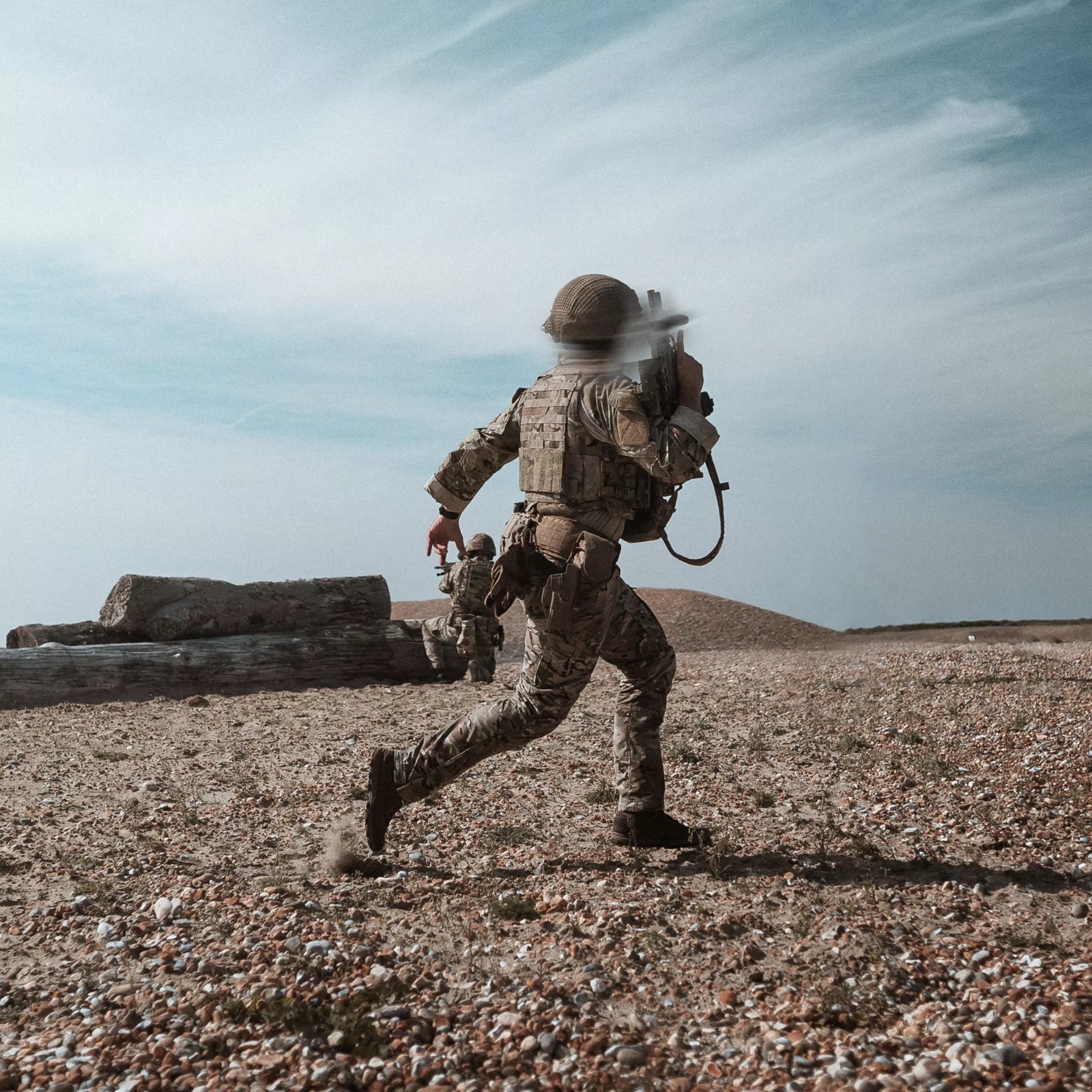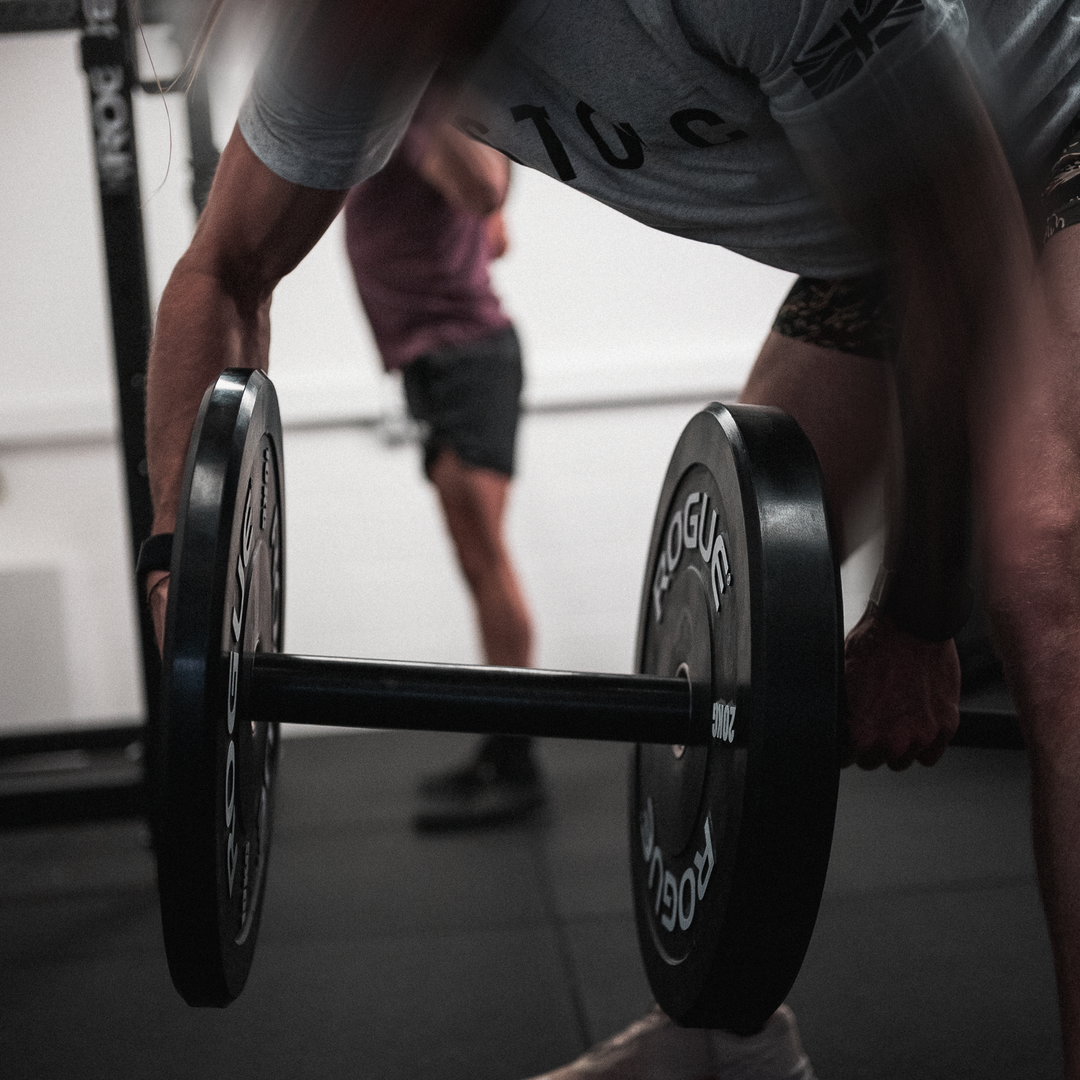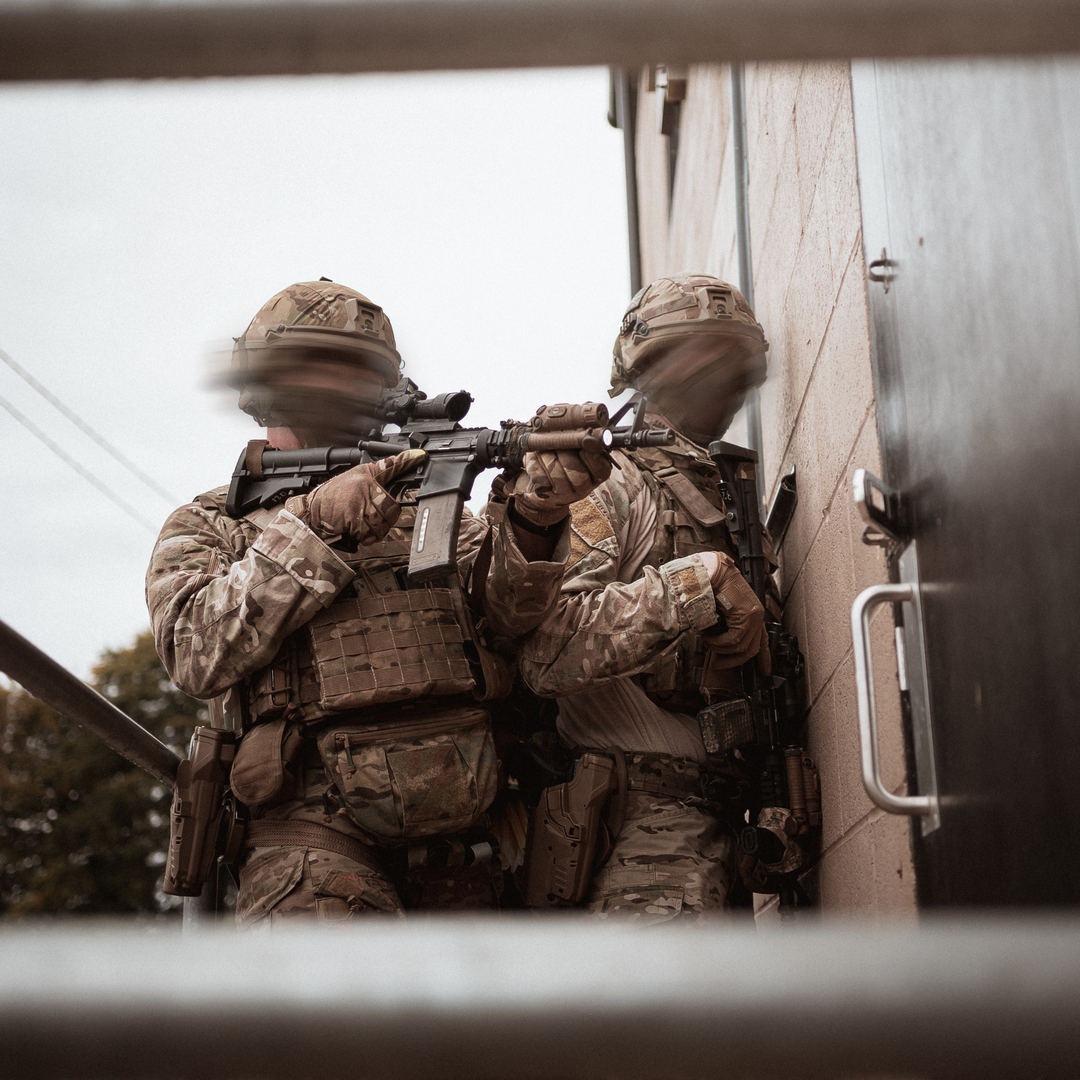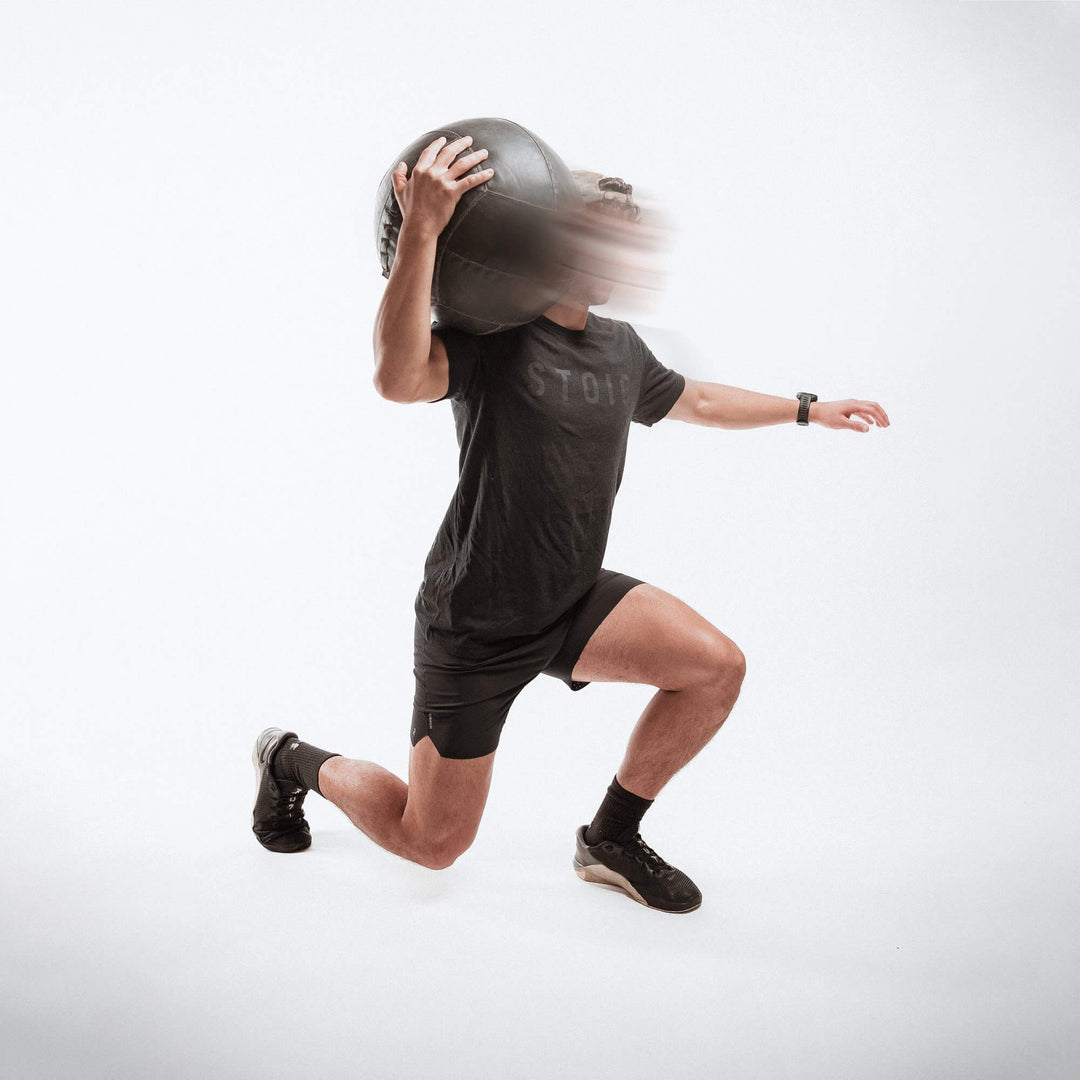SHIN SPLINTS THE 5 W's

Shin splints (or Medial Tibial Stress Syndrome, MTSS) can be a debilitating condition for anyone, but it can be especially challenging both physically and psychologically for military personnel.
Fortunately, with some alteration to your training volume, some substitutions and a variety of exercises, you can help alleviate the pain associated with it as well as strengthen the lower leg muscles to mitigate further injury.
In this article, we’ll go through the 5 ‘W’s of Shin Splints and how best to rehab them.
- Who – People who repeatedly put a lot of stress through the structures in their lower legs.
- What – Pain, inflammation and swelling.
- Where – The lower leg, anterior or posterior to the shin.
- When – The volume of training increases too much too soon.
- Why – Multiple reasons can contribute but primarily due to overuse.
What are Shin Splints and where do you get them?
‘Shin splints’ is a colloquial term used to describe pain and inflammation in the lower leg along the inside or front edges of the shin bone.

In an article by Winters et al, MTSS is currently defined as “pain that is present along the posteromedial border of the tibia that occurs during exercise or pain with palpation over a 5 centimetre or greater area of the posteromedial border of the tibia.”
You can also have pain present on the anterior edge of the shin bone that would be classified as Anterior Tibial Stress Syndrome (ATSS). The cause, advice for prevention and treatment for both MTSS and ATSS is the same.
Shin splints are far more commonly seen in people who put a lot of strain on their lower legs, with long-distance runners, dancers, and military personnel having the highest incidences.
Are shin splints serious?
Not necessarily, IF you do something about them rather than ignoring them or trying to carry on with your training. If left untreated and with continued overtraining, shin splints can develop into Bone Stress Injuries (bone fractures), which would require at least six weeks of almost complete bed rest.
| Low Risk | High Risk |
| Posteromedial tibia | Femoral neck |
| Fibula/lateral malleolus | Anterior cortex of the tibia |
| Femoral shaft | Medial malleolus |
| Pelvis | Talus (lateral process) |
| Calcaneus | Navicular |
| Diaphysis of 2nd to 4th metatarsals | Proximal diaphysis of the 5th metatarsal |
| Base of 2nd metatarsal | |
| Great-toe sesamoids |
If neglected for a long time, muscle compartment syndrome can develop if your muscle sheaths become too compressed by engorged muscles. Muscle compartment syndrome is a serious shin problem that frequently necessitates surgical intervention to prevent permanent muscle or nerve damage.
Why do military personnel get shin splints?
The exact nature of the condition isn’t well understood (Becker et al & Mulvad et al) but one of the frequent causes can be associated with the sharp increase in physical training either in basic training or even in the self guided training beforehand. This is particularly exacerbated by running on hard surfaces and combined with inadequate footwear or poor strength endurance in running musculature.
Here is a short breakdown of causes:
- Overtraining or sudden increase in physical activity
- Running on hard surfaces or uneven terrain
- Insufficient rest in-between training bouts
- Wearing improper footwear
- Muscle imbalances or weakness
- Poor biomechanical control such as:
- Decreased ankle mobility
- Poor hip/knee/ankle control
- Lack of core strength/endurance
Best practices for avoiding shin splints
The best way to prevent getting shin splints in the first place is to gradually increase physical activity and avoid overtraining. The key point being a controlled and periodised approach to running volume.
Combining that gradual increase or running volume with a periodised resistance training programme that strengthens your legs, hips, core and back as well as improving your aerobic capacity using other training methods (such as cycling/rowing) would be the gold standard for making sure you don’t succumb to them.
What to do if you have shin splints
Volume management and modifications for when you have shin splints
If you have pain with your day-to-day activities like walking or going up and down stairs, you’re doing too much volume in your sessions. Because shin splints are largely volume related, you’ll need to reduce your running mileage and intensity, or even put it completely on hold for a while.
If this is the case, you should look at improving your cardiovascular fitness by training via non-impact activities such as cycling, rowing or swimming. With shin splints, it’s a case of ‘the dose makes the cure or the poison’, meaning that too much will hurt you, but not doing anything won’t help you recover. Your training just needs to be regulated and increased incrementally.
Stretches to alleviate shin splints:
Ankle Circles
Ankle circles can help improve ankle mobility and blood flow to and from the lower leg. 10-15 rotations each way, trying to move slowly, with control and to the fullest range of motion you can.
Calf Stretches
Standing calf stretches in both a straight leg and bent leg fashion, placing emphasis on sinking into the stretch over 2-3 minutes.
Kneeling Ankle Stretches
Focussing on the anterior part of your ankle – you want to have your shins flat on the floor with your feet in plantarflexion (toes pointed). Sitting back onto your glutes will increase the stretch in that anterior compartment.
You can also sit in the same position but with your toes tucked underneath and your ankle in dorsiflexion to emphasise stretching your achilles and toes.
Glute Stretches
Sitting in a 90-90 shin box position, fan through your glutes for 2-3 minutes on each side to make sure they have adequate mobility in them.
Resistance training based exercises to help rehab shin splints:
Calf Raises
Calf raises are almost non negotiable when it comes to helping shin splints. Make sure you’re performing them standing and seated (straight leg and bent leg) and in different angles to fully target both calf muscles.
Intrinsic Foot Strength
Working on the intrinsic muscles of the foot will help to increase the ability to absorb ground reaction forces going through the foot and into the shin. Cycle through toe taps, toe raises, adducting and abducting your toes and performing ‘short foot’ drills to strengthen your foot arch.
Tibialis Anterior Raises
An often neglected movement – tib raises helps to strengthen the muscles on the front of the shin. This helps with reducing the fatigue felt in the anterior shin and ankle from picking your toes up during running, especially when moving uphill.
Heel and Toe Walking (monster walks)
Heel and toe walking is a low-impact exercise that can help strengthen the muscles in the front of the shin and improve overall lower leg strength. We refer to these as monster walks and you can also include inversion and eversion ankle positions to strengthen the medial and lateral part of the ankle.
To perform monster walks, alternate between walking on your heels, in the highest tip toe position, and with your ankle in inversion or eversion. Perform each for around 30 seconds at a time, rest, and then repeat for a few sets.
Split Squat variations
These variations allow for progressive ankle and lower leg strengthening, along with overall lower body strength improvements. Start with a front foot elevated position.
Single Leg Romanian Deadlift Variations
A great exercise to challenge and improve the strength of your foot, lower leg and hip musculature. You can use various pieces of equipment such as a landmine, kettlebell or barbell to create different stimuli.
To begin with, hold onto something for support to make it less balance based so you can overload your hips more.
Plyometric Progressions
Skipping can be an easy and controllable way to bring back that rapid loading/unloading training stimulus. You can progress this to higher jumping skips and then onto single leg hops, lateral hops and then further into maximum height or distance jumping.
Extra advice to improve your recovery from shin splints:
Using Compression Socks
Compression socks can potentially help improve circulation and reduce swelling and inflammation associated with shin splints. You can wear them for long periods of time but it’s best to avoid wearing them overnight or during exercise.
Making Sure Your Footwear Is Adequate
Something that is comfortable for you and your running style is what is going to be best. It’s recommended that you change your shoes roughly every 200-500 miles of use, but this would depend on running style, weight and comfort.
Having manual therapy sessions
Working with a soft tissue therapist in your area can help with pain management and potentially your recovery. Having soft tissue work on your feet, legs and glutes can make you feel better and more relaxed but contrary to common beliefs, it is not breaking anything down or realigning anything.
For the purpose of recovery, you should be aiming to get ‘firm pressure’ massages that aren’t painful or heavy and that don’t focus on one single area with a lot of heavy techniques.
Setting Yourself Realistic Expectations For Full Return to Activity
Some of the literature and research into expected recovery times can put a full return to activity anywhere between 3 to 12 months for someone who has been experiencing shin splint symptoms for 3 months or more.
Warden et al in 2014 laid out a decent graded running progression for individuals with a bone stress injury. Each ‘session’ would require the completion of the previous session pain free.
- Session #1: Walk for 30 minutes pain free.
- Session #2: Walk for 9 minutes, jog for 1 minute, and repeat 2 more times.
- Session #3: Walk for 8 minutes, jog for 1 minute, and repeat 2 more times.
[See table 3 at the bottom for the fully laid out recommendations for returning to running]
Continue with this systematic process until you’re able to jog for 30 minutes continuously. Keep in mind that in the initial phases, it’s more important to increase your volume, or time spent running, before increasing intensity, or the speed at which you run.
Therefore, your pacing of the walk/jog progression should be done at 50% of your normal pace. You should be taking a rest day between sessions and running should be pain free. Only once you’re able to complete 30 minutes slow paced jogging, should you start to slowly ramp up the intensity/speed until you can get back to running 30 minutes at your normal pace.
In summary
Shin splints can be a highly frustrating, emotionally and psychologically stressful and painful condition, especially for military personnel leading up to courses or during basic training.
However, with by implementing more of an incremental strategy to your training volume, coupled with appropriate resistance training, shin splints can be avoided relatively easily.
Although it can be tempting to rush your rehab, in the case of shin splints it is well worth taking the time and putting in the daily work in terms of stretching, strengthening and loading, to avoid further bouts of inflammation and injury and subsequently having to take more time off from training.
References
M Winters, E W P Bakker, M H Moen, C C Barten, R Teeuwen, A Weir. Medial tibial stress syndrome can be diagnosed reliably using history and physical examination. British Journal of Sports Medicine, 2018.
Winters, K. K., Kostishak, N., McLeod, T. V., & Welch Bacon, C. E.. Treatment of Medial Tibial Stress Syndrome: A Critical Review. International Journal of Athletic Therapy & Training.
J Becker, M Nakajima, W Wu. Factors Contributing to Medial Tibial Stress Syndrome in Runners: A Prospective Study. Medicine and Science in Sports and Exercise.
B Mulvad, R O Nielsen, M Lind, D Ramskov. Diagnoses and time to recovery among injured recreational runners in the RUN CLEVER trial. Public Library of Science.
S J Warden, I S Davis, M Fredericson. Management and prevention of bone stress injuries in long-distance runners. Journal of Orthopaedic & Sports Physical Therapy. 2014.
Graduated Running Program to Return a Runner to 30 Minutes of Pain-Free Running
| Stage 1 | Initial loading & jogging (50% normal pace) with increasing duration |
| A | Walk 30 minutes |
| B | Rest |
| C | Walk 9 minutes and jog 1 minute (3 repetitions) |
| D | Rest |
| E | Walk 8 minutes and jog 2 minutes (3 repetitions) |
| F | Rest |
| G | Walk 7 minutes and jog 3 minutes (3 repetitions) |
| H | Rest |
| I | Walk 6 minutes and jog 4 minutes (3 repetitions) |
| J | Rest |
| K | Walk 4 minutes and jog 6 minutes (3 repetitions) |
| L | Rest |
| M | Walk 2 minutes and jog 8 minutes (3 repetitions) |
| N | Rest |
| Stage 2 | Running with increasing intensity |
| A | Jog 30 minutes |
| B | Rest |
| C | Run 30 minutes at 60% normal pace |
| D | Rest |
| E | Run 30 minutes at 60% normal pace |
| F | Rest |
| G | Run 30 minutes at 70% normal pace |
| H | Rest |
| I | Run 30 minutes at 80% normal pace |
| J | Rest |
| K | Run 30 minutes at 90% normal pace |
| L | Rest |
| M | Run 30 minutes at full pace |
| N | Rest |
| Stage 3 | Running on consecutive days |
| A | Run 30 minutes at full pace |
| B | Run 30 minutes at full pace |
| C | Rest |
| D | Run 30 minutes at full pace |
| E | Run 30 minutes at full pace |
| F | Rest |
| G | Run 30 minutes at full pace |
| Stage 4 | Return to running |




